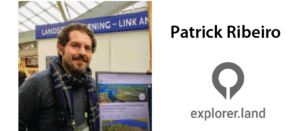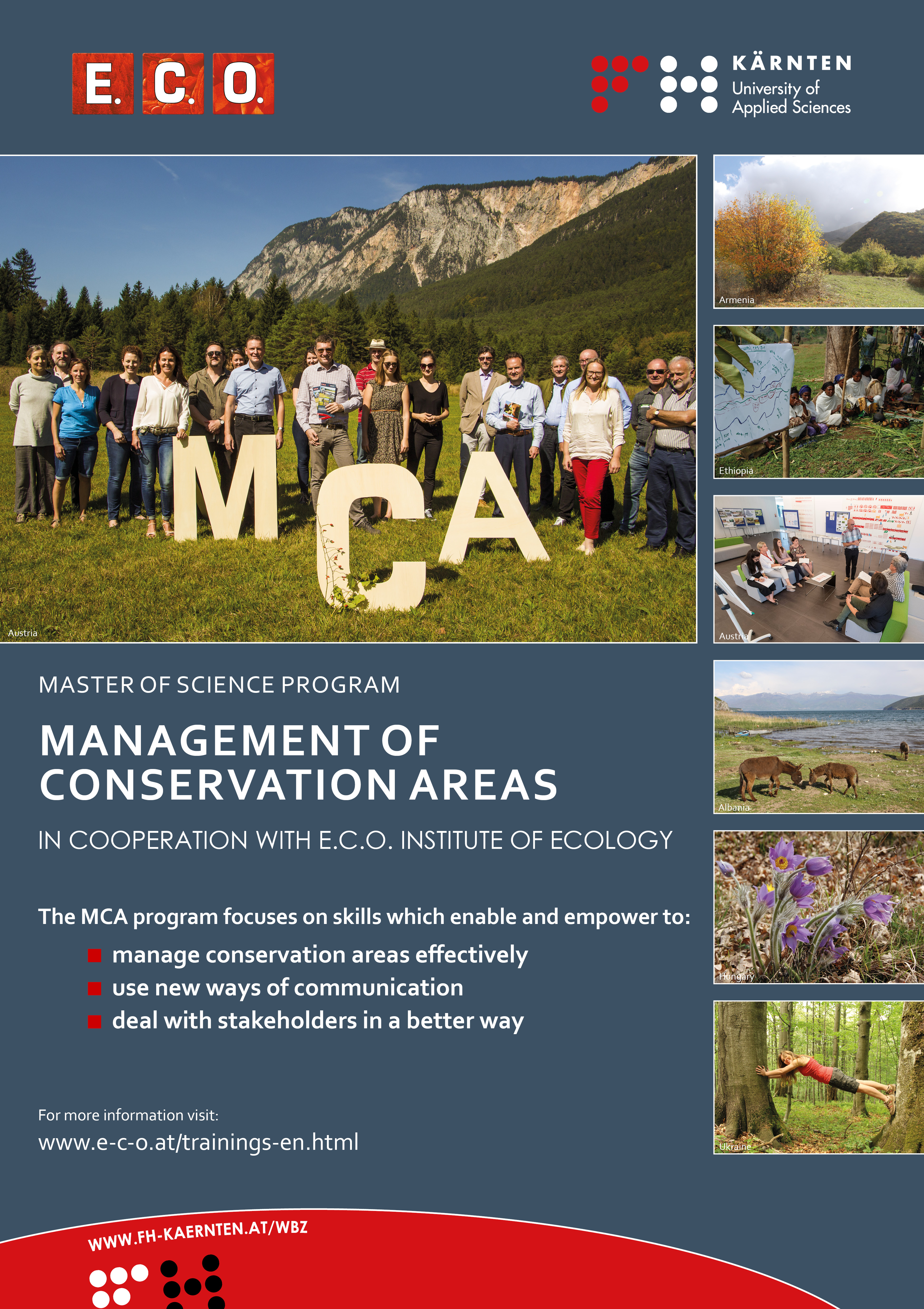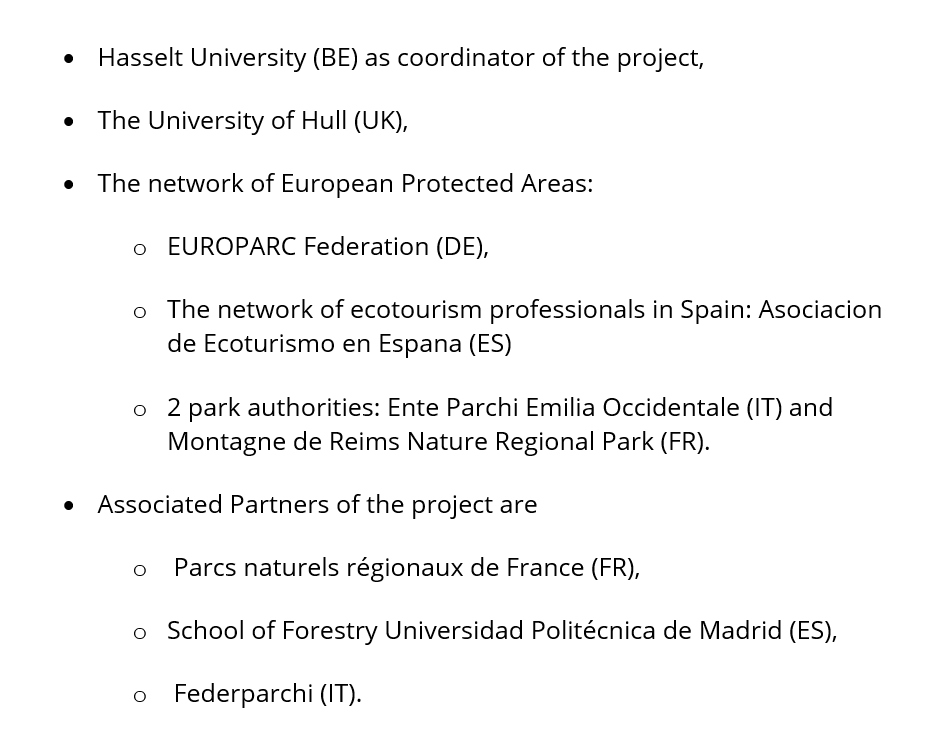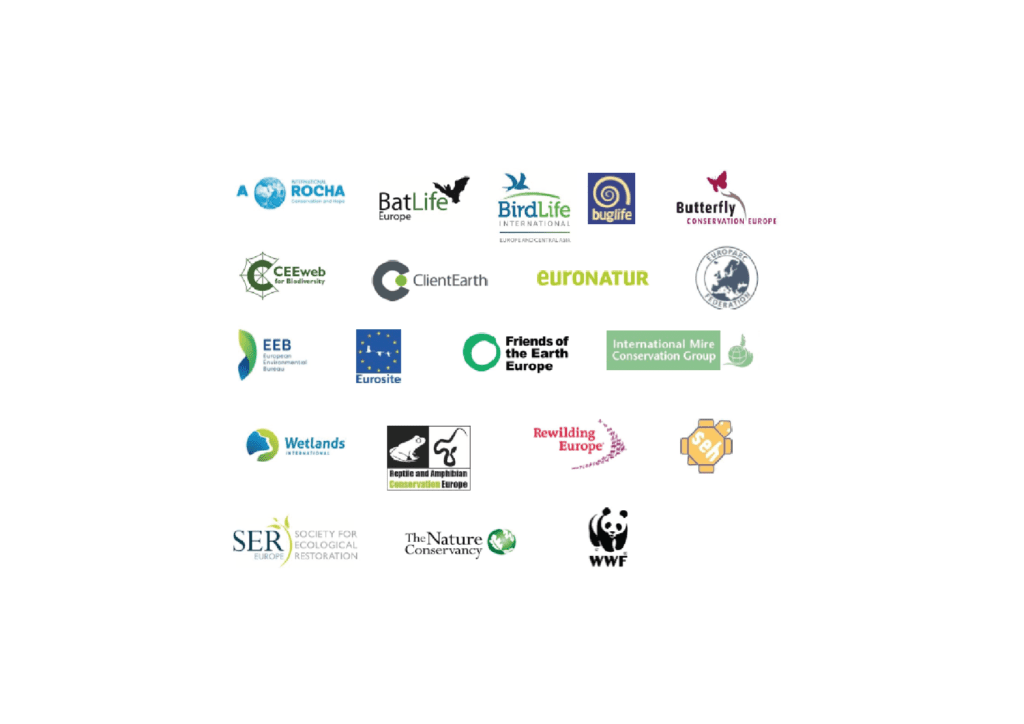Next Webinar: Connecting People & Nature – can technology bring us closer?
Connecting People & Nature
Nature conservation is not only a subject made of facts and scientific data. In a continent densely populated, with the largest population growth taking place in urbanised environments, we need to reconnect people with the natural processes around them. Nature is our life supporting system. When we lack quality experiences, apathy towards environmental concerns is more likely to manifest, as we are unable to see the importance of preserving it. Nature conservation is not only a subject made of facts and scientific data, it depends on people´s attitudes.
Recent publications are shedding new light on what really influences our attitudes and decision-making processes. Although our human capacity of making choices based on rational analysis, most of our decisions are instinct-driven, based on (unconscious) emotional connections.
We need to spark a deeper connection with people’s heart, and stop speaking only to their rational minds.
Can technology bring us closer?
Technology is evolving at a pace faster than ever, bringing new opportunities for nature conservation initiatives. The use of drones (unmanned aerial vehicles), for instance, is a growing trend that is helping Parks collecting useful data for mapping, monitoring vegetation or as wildfire detector. But can we combine technology to enhance people´s connection to nature?
In this webinar, we will hear how 2 entrepreneurs are using technology to reach out to new audiences. They see technology as a bridge, that allows people to experience and virtually visit places that would otherwise be impossible to reach.
Join our interactive webinar on the 6th June at 15:00 CEST to learn about the innovative social work of Restore Coral in Mexico, discover a new storytelling tool for conservation with Explorer.Land, and have the chance to directly interact with our invited guests. You will be able to join with your camera and microphone.
- 6th June, 15:00 CEST
- Register here
Art & Technology for the conservation of Mexican Coral Reefs
Restore Coral is an NGO based in Mexico that works for the restoration of coral reefs in the Mesoamerican Reef System. Through socialinnovation, art and the use of emerging technologies like virtual reality, they seek to increase public awareness about the importance of protecting coral reefs, while supporting the development of socially responsible strategies, with strong involvement of local communities and schools.

In June 2018, the White Syndrome was detected in Puerto Morelos and can currently be found throughout the entire Mexican Caribbean coast. It is a disease that has alarmingly increased in the past six months, and Restore Coral is part of the group composed of NGOs and governments, that is implementing an Action Plan to reduce the stress factors that damage the coral reef.
Roberto will also tell us about the fantastic step that has been taken in Mexico: environmental education has been included in the Constitutional Right of Education and will be a mandatory subject in all schools in Mexico.

Roberto Cerda is an action-oriented civic society leader, founder of Restore Coral. One of his big commitment has been to bring to attention to the restoration agenda of the coral reef restoration in Mexico. Today he’s a member of the Resilience Action Plan to save coral from the White Syndrome.
Explorer.Land, a new storytelling tool for Forest Conservation Projects
Open Forests is a company based in Germany dedicated to support sustainable landscape projects to thrive. They develop integrated information management systems for forestry, agroforestry and conservation projects and support organizations to acquire satellite-, drone-, and field data.

Understanding that many of the conservation projects around the globe often lack marketing resources to properly tell their successful conservation stories and show real evidence to their funders the outcomes of their activities, Open Forests recently launched the Explorer.Land.
It is a map-based online platform, designed to present forest landscape projects and to communicate their activities. Unlike other social media and presentation platforms – where content is mainly shared in a timeline -, explorer.land allows all published content, like posts, photos, videos to be shown in its geographical context on top of interactive high-resolution maps.
Patrick will guide us through the platform and share some conservation stories from across the globe.

Patrick Ribeiro is founder and CEO of Open Forests. His expertise in drone imagery and image processing for forestry and landscape related projects, made him build up the idea of Explorer.Land, which he is currently managing.
How to join?
Webinars are open not only to EUROPARC members – but to everyone with an interest in Protected Areas. Participation is free but registration is necessary. Register here.
In this interactive webinar, participants will be able to join in with their own video camera, share examples from their parks and direct their questions to the invited guests.

MANAGEMENT OF CONSERVATION AREAS – international master program
E.C.O.
Together with the Carinthian University of Applied Sciences, E.C.O. Institut für Ökologie offers the international master program Management of Conservation Areas.
The comprehensive academic education is unique in Europe. It allows career growth in protected areas (nature parks, national parks, biosphere reserves, world heritage sites or European protected areas), in research and education as well as in NGOs or international organizations. The key elements of skills-oriented education are international cooperation as well as transcultural learning and working.
The study program comprises 120 ECTS, culminating in a Masters degree (M.Sc.) graduation.
Start, Duration and Extent
The study program Management of Conservation Areas takes four semesters and can be completed while working full-time. In total, 64 attendance days are structured into eight modules of five to 13 days each. The courses take place at the Carinthian University of Applied Sciences as well as in selected protected areas in Central and Eastern Europe.
Next round: October 2019 – October 2021 (Application deadline: June 30, 2019)
Content
The study program Management of Conservation Areas is theory-based, practical and oriented towards the international state of the art. The students acquire:
- comprehensive overview of the tasks and functions of protected areas from a global perspective,
- comprehensive access to instruments and technologies for the management of protected areas,
- the personal competencies to analyze and solve problems that occur in the planning and managing of protected areas
- innovative learning methods, interactions with a great number of participants as well as field trips support the learning success.
Cooperation
The master program Management of Conservation Areas is embedded in a dense network of cooperation partners. An international scientific board ensures the scientific excellence of the teaching and the final theses. An Austrian experience pool is an interface to experiences and best practice examples in Austria. In the institutional board, important international organizations are represented.
Additionally, a global network of regional contact persons is available for anyone interested.
Further information is available here:

ERASMUS+ Sustainable Tourism: Training for Tomorrow Research
EUROPARC Federation invites all its members, Charter Parks and stakeholders associated directly or indirectly with the territory of a natural protected area (natural park, national park, nature reserve, Natura 2000 or other), and involved in any way in the planning and/or delivery of tourism and recreation in the region, to complete the following research (the questionnaire should take around 10 minutes), developed within our ERASMUS+ project “Sustainable Tourism: Training for Tomorrow”.
The research aims to increase the quality, supply and accessibility of training in sustainable tourism for Protected Area stakeholders across Europe.
Your responses will help identify potential training needs in different areas related to sustainable tourism and for different stakeholders; your answers will be totally confidential and treated only for statistical purposes.
Find the Survey in your language (English, French, Italian, and Spanish):
EN: https://uhasselt.eu.qualtrics.com/jfe/form/SV_73Z1vyjoBCokk4t
FR: https://uhasselt.eu.qualtrics.com/jfe/form/SV_9yoxBIrnrI0k4aF
IT: https://uhasselt.eu.qualtrics.com/jfe/form/SV_00nNR7qEHTrMu0Z
ES: https://uhasselt.eu.qualtrics.com/jfe/form/SV_cwKug49ylqkQIip
About the project
The ERASMUS+ “Sustainable Tourism: Training for Tomorrow” project aims to build the capacity of Protected Area stakeholders in the field of sustainable tourism.
Funded through the ERASMUS+ Key Action 2 (Strategic partnerships in the field of education and training), the project brought together partners working on different fields in the sustainable tourism sector:

Projects’ objectives
Aiming to jointly develop a European standard for Sustainable Tourism Training for protected areas (PA’s) and drawing from the experiences of the EUROPARC Charter for Sustainable Tourism, the partnership has the following objectives:
- to increase the quality, supply and accessibility of training in sustainable tourism for PA stakeholders across Europe;
- to develop innovative, open access, online training platform which will enable access to sustainable tourism training for PA staff, businesses, local/regional authorities, and others;
- to provide high-quality e-learning and ‘blended learning’ opportunities, through the creation of a new, up-to-date curriculum, and supported by a training toolkit, based on end users’ needs;
- to disseminate the training curriculum across European and national networks through a comprehensive programme of multiplier events and dissemination initiatives.
Recommendations for the post-2020 Biodiversity Strategy
In light of the evaluation process of the EU 2020 Biodiversity Strategy and the discussions on the post-2020 EU Biodiversity Strategy, the European Habitats Forum (EHF), which EUROPARC is a member of, assessed the current EU Biodiversity Strategy and defined a set of recommendations for post-2020 EU Biodiversity Policy and action.
The EU is set to fail its 2020 target to halt biodiversity loss
The EU is set to fail its 2020 target to halt biodiversity loss. Both the 2015 Mid-term evaluation of the EU Biodiversity Strategy, the 2018 IPBES Regional assessment for Europe and Central Asia and the recently published 2019 IPBES Global Assessment confirmed the continuing decline of biodiversity and the degradation of ecosystem services in the EU and globally. This presents a significant threat to human wellbeing.
Biodiversity loss is one of the most critical environmental threats alongside climate change and the two are inextricably linked.
Without addressing the rapid loss of biodiversity, the world will struggle and likely fail to live up to the Paris Agreement or to achieve the UN Sustainable Development Goals (SDGs). And conversely, without addressing climate change, actions to tackle the loss of biodiversity are likely to fail.
Land use change and direct exploitation of organisms remain the main cause of biodiversity loss in natural and semi-natural habitats. Particular pressure is exerted by intensive agricultural practices, land abandonment, urban sprawl, grey infrastructure development, and human activities at sea (such as fishing, shipping or tourism).
The main reasons why the EU is failing to halt biodiversity loss have been known for a long time and they remain the same:
- The insufficient implementation of existing nature, water, and marine legislation
- The lack of ownership and the lack of mainstreaming with other sectors and policies: agriculture, fisheries, forestry, and energy, which means that the main drivers of biodiversity loss are not sufficiently addressed
- The lack of resources (finance gap) and continuation of perverse subsidies
Recommendations for the post-2020 Biodiversity Strategy
The underlying problem is the lack of political will to take nature loss seriously and to act accordingly and the opposition of those with vested interests in the status quo. The EU’s commitment to “lead by example” made in 2010, is significantly undermined because it is not followed up with the action on the ground in all EU Member States and this puts the EU’s credibility at stake, both internationally and at home.
In order to change this and to secure positive political will, more transparency in decision making is essential and the influence of vested interests needs to be challenged. Furthermore, an intense effort needs to be made to communicate to citizens and politicians the often hidden values of nature and ecosystem services. The people’s movement to avert the collapse of our life support system and an impoverished future for our children and grandchildren needs to be supported.
Suggestions on specific targets
The strategy needs to contain ambitious and SMART targets that will strengthen the implementation and enforcement of nature legislation (BHD, WFD, MSFD) and promote the synergies between them.
For the Nature Directives, the focus should be on ensuring effective management of all N2000 sites and reducing the pressures of human activities that prevent maintaining or restoring the protected habitats and species to Favourable Conservation Status (FCS). Effective, systematic and long term biodiversity monitoring, enhanced connectivity, adequate financing and preventing damage are also required. The engagement of EU Member states environmental, agricultural and fisheries authorities in its implementation needs to be guided by a gap analysis, and the gaps need to be closed by 2030 so that FCS is achieved.
For the Water Framework Directive, the focus should be on developing more ambitious and effective management plans by reducing the use of exemptions, strictly applying the non-deterioration obligation, as well as properly implementing the economic provisions to ensure that the value of freshwater ecosystems for their role in safeguarding water resources is truly appreciated.
For the Marine Strategy Framework Directive, the focus should be wider than fisheries impacts and it should ensure that more ambitious programmes of measures are developed and implemented, including by making the necessary funds available. It should cover a wide range of direct management measures addressing both individual threats from specific activities and cumulative impacts on marine ecosystems, in view of reaching Good Environmental Status of EU seas as soon as possible after 2020.
Frequent systematic monitoring of terrestrial and marine biodiversity and production of indicators is essential to track outcomes and evaluate progress. It’s not only essential to monitor population sizes, but for understanding population declines we need to know also more about demographic data. Researchers revealed that only 1.3% of the mammal, bird, reptile and amphibian species have comprehensive information on birth and death rates. They developed a Demographic Species Knowledge Index which should be supported.
In the context of the UN Decade for ecosystem restoration, and given the fact that progress on target 2 of the current strategy has been largely insufficient, it is clear that a new approach for ecosystem restoration, with stronger commitments, is needed. Special attention should be given to providing space for natural processes to restore and sustain ecosystem functionality and resilience (following rewilding principles like free flowing rivers and natural grazing for instance), to restoring species populations and to the stimulation of partnerships with other economic sectors in developing nature-based economies. Restoration of connectivity and landscape defragmentation should also be a priority. The mitigation and adaptation potential of restoring forests, wetlands, peatlands and grasslands and coastal, offshore and high seas ecosystems, should be strongly highlighted.
The collapse in freshwater biodiversity should be better addressed in the post 2020 Biodiversity Strategy. Healthy freshwater ecosystems (wetlands, rivers, floodplains, peatlands) are essential for nature, for society and for economies. These ecosystems, especially peatlands, store vast amounts of carbon, making their protection and restoration critical to stopping climate change. In Europe, these ecosystems have been modified for centuries and are zones of the most intense human activity. They are home to Europe’s highest levels of biodiversity, where the biggest decline of species has been detected. Freshwater species are declining at a faster rate than species in any other ecosystems: on average the abundance of populations monitored in the freshwater system declined by 83% in the last decades. Not even half the waters in the EU are considered to be healthy.
Mainstreaming nature protection and enhancement as an objective in other policies is the major challenge. To achieve this, other sectors need greater ownership of nature conservation issues and to take responsibility in the process of developing the biodiversity strategy and achieving benefits for biodiversity, e.g. by having clear tasks assigned to all ministries and parts of administration. Increased collaboration across sectors is needed to better integrate nature conservation and restoration within these sectors. Unless real commitment and political will is shown, we will not see a change in the negative trends. Without assessing and addressing the incentives and drivers, and transforming the economy it will not be possible to halt biodiversity loss. Without a major shift in agriculture policy, where public money actually rewards public goods, we will not be able to halt the dramatic decline of farmland birds and pollinators and support recovery. The same is true for fisheries policies, renewable energy, transport policy etc. Policy measures in all sectors should be developed to direct positive outcomes, including enhancement and achieving biodiversity gains, and biodiversity targets should be applicable across sectors.
The pollinators initiative to tackle the rapid decline of pollinators in Europe needs to be fully implemented and integrated in the post 2020 Biodiversity Strategy. Invertebrates are at the very heart of our ecosystems and their precipitous decline presents a crisis for agriculture and the health of the environment across the EU. Resolute action is needed to halt and reverse the decline of pollinators and the pollination service they provide. The post 2020 Biodiversity Strategy must include clear targets to address the drivers and pressures behind pollinator decline, including intensive agriculture, pesticide use, and land use change.
Europe’s seas include some of the most intensively used marine waters in the world and remain threatened by a range of human activities that lead to the loss of marine biodiversity and degraded habitats, the overexploitation of fish stocks, and pollution. Main challenges should be addressed by (1) ensuring proper enforcement and implementation of existing management rules, especially to recover fish populations and end overfishing; (2) designing new management rules for issues that are not currently implemented, such as ecosystem-wide impact of commercial and recreational fisheries, underwater noise, and microplastics; (3) implementing robust monitoring systems, collecting sufficient data and making them publically available to allow the design and implementation of better and more effective conservation measures; and (4) adopting financial commitment to ensure management/enforcement/data collection is taking place. Decisions for supporting the marine environment need to be taken while thinking about the long term use and protection of the marine environment. This includes properly applying an ecosystem-based approach to maritime spatial planning, where nature is the fundamental basis of all social and economic development at sea and maritime activities are planned in view to achieving Good Environmental Status of EU seas.
To tackle the finance gap for nature protection and restoration, there is an urgent need to increase available funding at all levels. As stated above, this needs to be in addition to phasing out harmful subsidies and making sure that EU funding does not lead to biodiversity loss (implementation of biodiversity proofing). The funding available for nature conservation and implementation of the biodiversity strategy needs to be increased significantly, by setting a spending target of 50% of the overall budget for nature, climate and environment. As the current budget discussions go into the direction of more responsibility for Member States (subsidiarity), it becomes even more important to make sure that funding opportunities for nature are fully included in the CAP strategic plans and the operational programmes, including EMFF operational programmes.
Given the fact that the EU represents only 7% of the world’s population, but uses up almost 20% of the global biocapacity increased action to tackle global biodiversity loss and to reduce the EU’s global footprint is direly needed. This needs to go beyond the greening of development policies and must pave the road for a fundamental system change regarding trade and consumption policies, including a change of economic incentives and supporting a UN treaty on transnational corporations and human rights to ensure global environmental and human rights standards are respected by corporations in third countries, as they are in Europe. EU trade agreements must ensure the highest environmental standards are maintained. The EU has been supporting biodiversity conservation globally through its development cooperation instruments, and this needs to be continued and stepped up in the next Budget period to support biodiversity and climate action as well as the implementation of the SDGs in Europe and in third countries.
Building capacity for local communities and civil society to ensure proper decision making and implementation of environmental law is essential. The IPBES global assessment summary clearly identifies the need for strengthening environmental laws and policies and improving their implementation as a key lever for protecting biodiversity. Equally sustainable outcomes are more likely where local communities are involved and participating in decision making.
As the IPBES global assessment has clearly shown, we are facing an ecological emergency and the risks of nature loss for humanity are alarming. However, the report also makes it clear that it is possible to halt and reverse this trend if we implement transformative changes to address the indirect drivers that are the root causes of nature deterioration. The key challenge is to raise political will and ambition to implement effectively the necessary actions. The EU needs to make halting and reversing biodiversity loss by 2030 a top priority on the political agenda of Heads of States and not leave this crucial issue to environment ministers alone.
You can read the full European Habitats Forum Paper HERE!

EUROPARC is one of the members of the European Habitats Forum, together with A Rocha, BatLife Europe, BirdLife Europe and Central Asia, Buglife-The Invertebrate Conservation Trust, Butterfly Conservation Europe, CEEweb for Biodiversity, Client Earth, European Natural Heritage Foundation (Euronatur), European Environmental Bureau (EEB), Eurosite, Friends of the Earth Europe, International Mire Conservation Group, Reptile and Amphibian Conservation Europe (RACE), Rewilding Europe, Societas Europaea Herpetologica, Society for Ecological Restoration (SER), The Nature Conservancy, Wetlands International-European Association and WWF European Policy Office